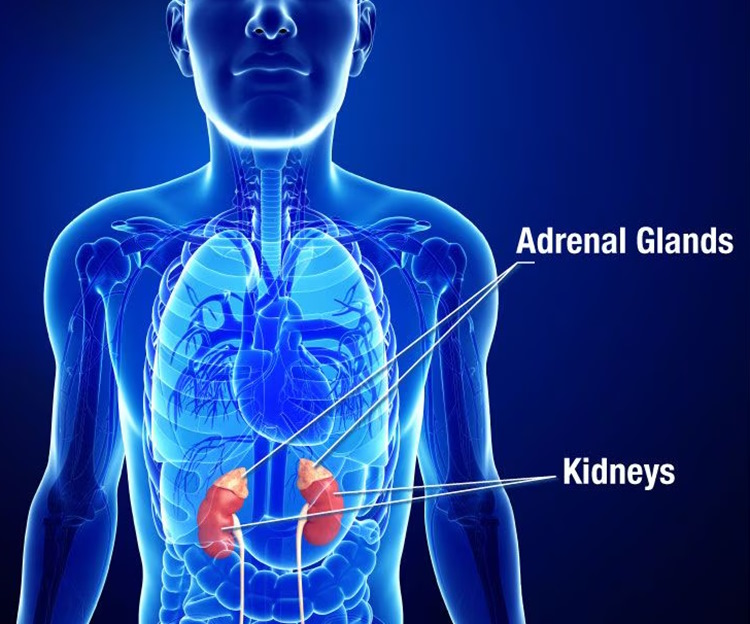Adrenal fatigue: is it really a thing? The symptoms sure are!
In recent years, “adrenal fatigue” has become a popular term in fitness, particularly for those involved with high-intensity training (HIT). The main reasoning behind the concept suggests that intense, prolonged physical stress can “fatigue” the adrenal glands, leaving athletes feeling exhausted, burnt out, and/or unable to recover. However, the very existence of adrenal fatigue is still controversial, with significant debate in the medical community. We will take a closer look at what adrenal fatigue is supposed to be, the symptoms attributed to it, and how high-intensity training might impact adrenal function and cortisol levels.

Adrenal fatigue is a term commonly used in alternative medicine to describe a state in which the adrenal glands, due to prolonged stress or excessive physical activity, become “overworked” and are no longer able to produce cortisol and other essential hormones at healthy levels. People experiencing what they perceive as adrenal fatigue often report symptoms like chronic fatigue, difficulty sleeping, brain fog, irritability, and trouble recovering from workouts. However, it’s important to note that while these symptoms are very real, “adrenal fatigue” as a medical diagnosis is not officially recognized by mainstream medicine.
The main reason for this skepticism lies in the physiology of the adrenal glands and cortisol production. While the adrenal glands can indeed become dysfunctional in extreme conditions, such as with Addison’s disease (an autoimmune condition that severely limits adrenal function), the idea that adrenal glands can “wear out” from overuse is disputed. Many medical professionals argue that while stress impacts cortisol, the body has multiple regulatory systems in place to prevent a complete adrenal “shutdown.”
The symptoms
Though the concept of adrenal fatigue as a medical condition is debated, the symptoms associated with it are very real and commonly reported by both athletes and non-athletes. These symptoms typically include:
- Chronic fatigue: persistent tiredness that doesn’t seem to improve with rest or sleep;
- Difficulty sleeping: insomnia, or waking up feeling unrefreshed, even after a full night’s sleep;
- Mood changes: increased irritability, anxiety, or depression;
- Muscle weakness or soreness: difficulty recovering from workouts and generalized muscle pain;
- Brain fog: difficulty concentrating, memory lapses, or feelings of mental cloudiness;
- Low energy for workouts: a noticeable decrease in workout motivation, energy, and performance;
- Salt and sugar: sudden cravings for either sugary or salty foods.
Many of these symptoms can be mistaken with those of overtraining syndrome, where the body doesn’t fully recover between workouts, leading to a decrease in performance and a constant sense of fatigue.
Cortisol
To understand how high-intensity training might influence these symptoms, it helps to look at how the adrenal glands function and what cortisol does in the body. The adrenal glands, located atop each kidney, produce hormones essential for various bodily functions. Cortisol, often called the “stress hormone,” is among the primary hormones the adrenal glands produce. It plays a major role in:
- Blood sugar: cortisol helps maintain blood glucose by stimulating gluconeogenesis in the liver;
- Metabolism: it impacts how the body breaks down fats, proteins, and carbohydrates for energy;
- Inflammation: cortisol has an anti-inflammatory effect that helps control the immune response;
- Stress: during stress, cortisol levels rise to support increased energy needs.
Intense physical activity, like HIT, stimulates the release of cortisol to meet the body’s rapid energy requirements and prepare it for the physical demands. In the short term, this release of cortisol is beneficial for performance. However, if cortisol levels remain elevated due to constant stress from overtraining, poor recovery, or a lack of sleep, it may disrupt the body’s hormonal balance, leading to what some call “adrenal burnout” symptoms.
Undesirable effects
High-intensity training is known to stimulate cortisol production due to the physical stress it places on the body. While a short-term increase in cortisol is natural and beneficial, chronic elevation can lead to undesirable effects, including:
- Muscle breakdown: prolonged high cortisol can lead to muscle catabolism, impairing muscle growth and recovery;
- Increased fat storage: elevated cortisol levels can encourage fat storage, particularly around the abdomen;
- Weakened immune system: high cortisol suppresses immune function, increasing the risk of illness or prolonged recovery;
- Mental and physical fatigue: constant high cortisol levels can impact mental clarity, mood, and physical energy levels.
Although cortisol production is a natural response to stress, if the body doesn’t get enough time to rest and reset, this constant demand on the adrenal glands may contribute to the symptoms commonly associated with adrenal fatigue.
A related concept is hypothalamic-pituitary-adrenal (HPA) axis dysregulation. This is where the signaling pathway that controls the release of cortisol becomes impaired, often due to chronic stress or overtraining. Although not a “fatigue” of the adrenal glands, HPA axis dysregulation can result in many of the same symptoms, as the body struggles to properly manage cortisol levels and other stress hormones.
Practical steps
If you’re feeling the symptoms associated with adrenal fatigue, recovery and overall stress management is the way to deal with it. Here are some practical steps you can try:
- Recovery: add rest days and deload weeks into your routine to give your body time to recover;
- Sleep: aim for 7-9 hours of quality sleep each night to support hormone balance and overall recovery;
- Nutrition: a balanced diet with sufficient protein, healthy fats, and adequate carbs can support adrenal health and recovery;
- Stress outside the gym: engage in stress-reducing activities like meditation, breathing exercises, or yoga to manage cortisol levels;
- Listen to your body: if you’re consistently feeling fatigued or unmotivated, it may be time to dial back training intensity temporarily.
In conclusion, while adrenal fatigue may not be an official diagnosis, the symptoms attributed to it are very common among athletes who push their bodies to the limit. High-intensity training can significantly impact cortisol levels and adrenal function, but with proper recovery and stress management, these symptoms can often be minimized. If you’re currently experiencing chronic fatigue or difficulty recovering from workouts, either try the tips shown here or consider consulting with a healthcare or fitness professional to assess your training, lifestyle, and recovery strategies.









